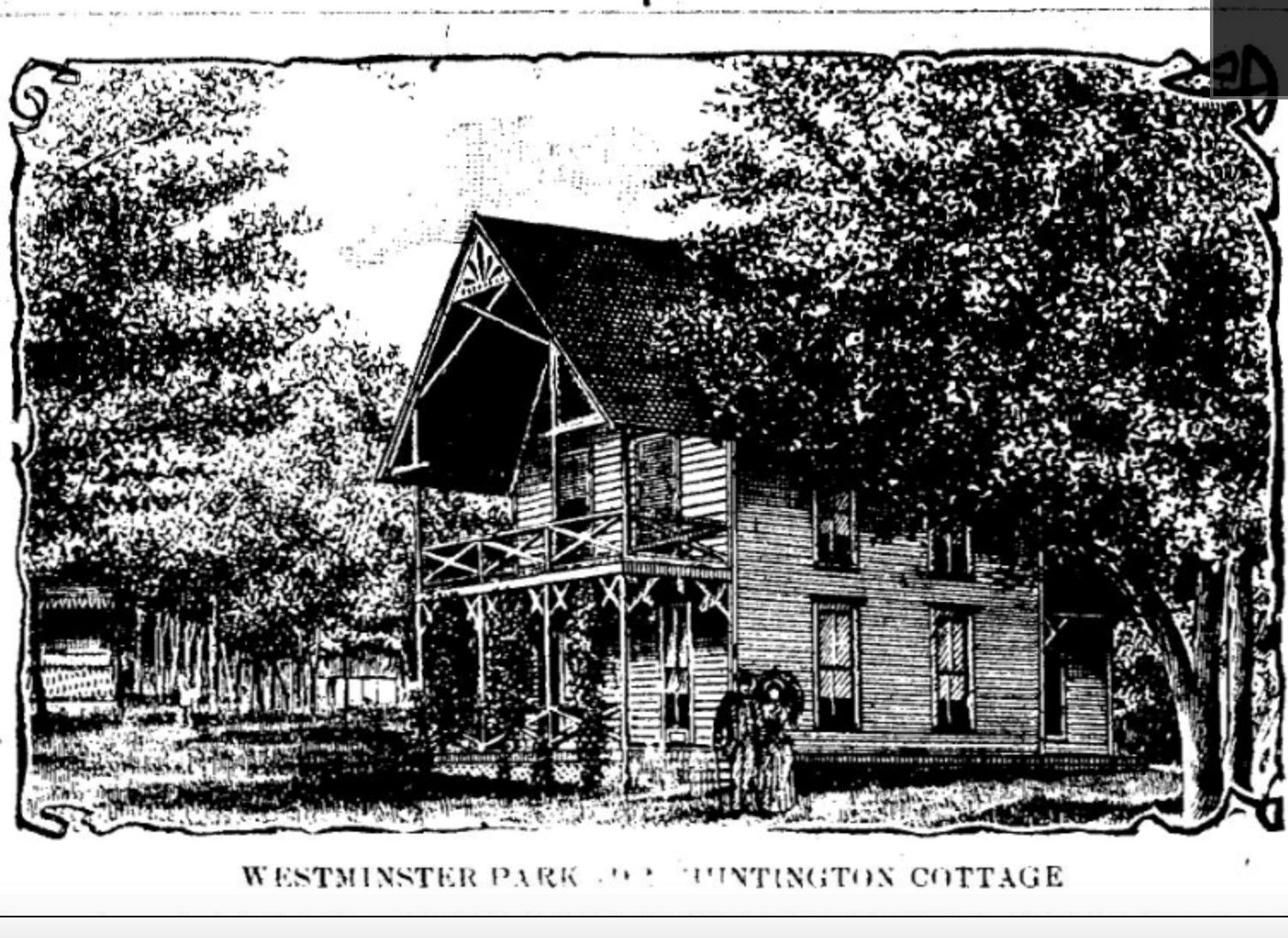
Last month we read about Watertown residents, Annie Wood Hanford and George R. Hanford of “Lookout Cottage”. Their next-door neighbor in Westminster was another renowned man of Watertown, Dr. J. D. Huntington, a well-known engraver, publisher, and dentist. Huntington was a deeply religious man and a passionate Prohibitionist. I believe he was likely instrumental in supporting the regulations prohibiting the use of liquor in the early days of Westminster Park. It would not surprise me to learn that Huntington also participated in issuing the edict reported in 1879 that work on Sundays would be prosecuted!
Dr. John Dickenson Huntington (1827-1900) served on the Westminster Park Board of Trustees from the earliest days, wholeheartedly participating in the planning of the community. In March of 1878 in the “Watertown Times”, we read that Huntington brought the illustrations from the first descriptive pamphlet of Westminster Park to the March Association-meeting. The Board members could see the graphics for the Hotel, the Long Dock, the Warehouse, and the Chapel. At that meeting, it was announced that plans and specifications for the Chapel were to be found at Dr. Huntington’s Watertown office, and builders were invited to submit bids for the construction of the Chapel to him. Additionally, Dr. Huntington received submissions for the Cottage Design Contest at his office in Watertown.
Huntington served on the Westminster Park Board of Trustees for two decades, sometimes serving as an officer of the group, and sometimes serving on the Executive Committee. There were many social column reports in newspapers of his visits to Westminster Park over the years. But John D. Huntington had a more compelling passion. He was a vehement Prohibitionist.
Huntington was a member of the Watertown Temperance Society, and was often a delegate to the New York State Temperance Conventions. By 1884 he was elected delegate to the National Prohibition Convention in Pittsburgh, Pennsylvania. Huntington ran for public office every year for nearly twenty years on the Prohibitionist Ticket. In 1889, he ran for Mayor of Watertown, but most years he ran for the position of Senator in New York State. In most elections, Huntington came in third of three candidates, but that never dissuaded him from continuing to run for office and to spread the message of the evils of alcohol. In 1891, a news article about Huntington reported that he “has never failed to vote the Prohibition ticket, sometimes being compelled to write it (in), as there were none printed for his ward.”
Moral convictions ran deep in the Watertown Prohibition Club1 in that era. In 1892, the club invited Mrs. Carrie Twing, a spiritualist speaker, to address their group. Mrs. Twing was a well-known lecturer in New York State. She had addressed groups at Chautauqua Institute, and the New York State Spiritualist Assembly. (Later in life she became the state lecturer for the New York State Grange. In 1894, she spoke to the Suffrage Committee of the NYS Constitutional Convention.) Mrs. Twing said she practiced Spiritualism because Spiritualism recognizes the equality of the sexes. She lobbied for women’s suffrage rights and especially for the rights of farm women. She is credited with empowering the women of rural America.
Well!! Certain members of the Watertown Prohibition Club were outraged by her ideas and her invitation to speak before their group! The President, Vice President, and Secretary all resigned in protest. Other members came forward to take up club leadership, including John D. Huntington, who became the new Vice President. The “Watertown Re-union” reported, “the cause of temperance goes on uninterrupted.”
Huntington’s strong moral convictions were evident when in 1891, he became embroiled in a Watertown controversy. He and two other members of the Law and Order League charged the local District Attorney with “unfaithfulness in the discharge of his duties” over alleged financial irregularities. The Law and Order League asked the Governor to remove D. A. Peck from office. Peck was a West Point Graduate and the son of the Sheriff. Much controversy ensued.
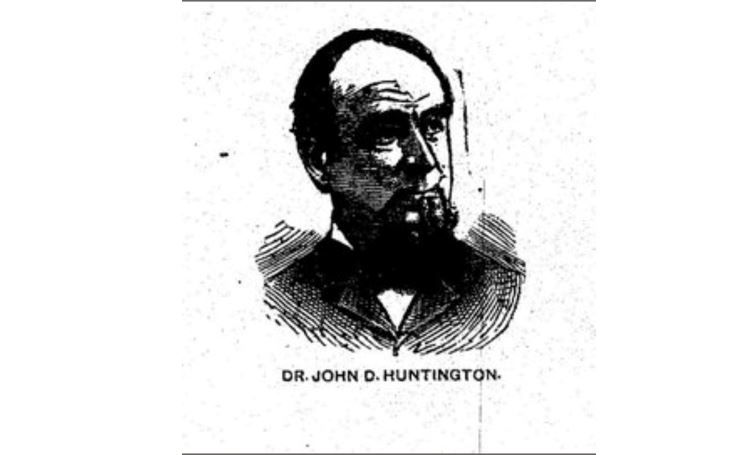
We are left to wonder what created such a passion for righteousness in this man. John Dickenson Huntington had quite a life story. John’s ancestors included a Puritan, a Revolutionary War Soldier, a signer of the Declaration of Independence and John’s grandfather, William Huntington, a veteran of the War of 1812, who had come to Jefferson County from Connecticut in 1804. The hamlet of Huntingtonville, near Watertown, NY, is named in his honor.
John’s father was also named William Huntington. His mother was Zina Baker Huntington. William and Zina were devout Presbyterians. John was raised in a home where there was an emphasis on reading the Bible and discussing matters of spiritual importance. In 1835, the family was visited by Hyrum Smith and David Whitmer, missionaries of the Church of the Latter-Day Saints. The entire Huntington family converted to Mormonism, except for the eldest brother, Chancy. John was 9 years old at that time.
The family left the North Country, following the western migration of the members of the Mormon Church across America. As the group moved from town to town looking for a location that espoused religious tolerance, they settled for a time in Nauvoo, Illinois. While there, in 1839, John’s mother contracted cholera and died. The Huntington children were taken in by the family of Joseph Smith, founder and leader of the Mormon Church. It was noticed that John’s older sister, Zina Diantha Huntington, who had recently recovered from cholera, exhibited the gift of tongues and the interpretation of tongues, as well as the gifts of prophecy and healing. Joseph Smith (a polygamist) proposed marriage to Zina. Zina had a spiritual crisis, and married another man and bore his children, but eventually, Joseph Smith also took Zina as his wife and “sealed” her for all eternity.
In 1844 Joseph Smith died. Brigham Young was chosen to lead the Mormon Church. Zina’s first husband was called to serve a mission to England. In his absence, Zina married Brigham Young and bore one child by him. She remained married to Young for the rest of her life. Zina played a key role in the leadership of the Church of the Latter-Day Saints. She strongly advocated for temperance and for women’s suffrage and attended the Women’s Conference in Buffalo, New York, and the National Woman Suffrage Association Convention in New York. John spent his teenage years in the household of Brigham Young, so it was not unexpected that he developed strict values. Huntington lived in Utah until his own father’s death in 1846. At that time, he moved back to Jefferson County, New York.
While on his journey with the Mormons, John had learned the skills of engraving and printing. Calling upon these talents as he resettled in New York, Huntington founded the first daily newspaper in Watertown and published the first city directory. He also managed a telegraph business.
In 1861, Huntington began the study of dentistry and opened a practice in Watertown, which he continued until shortly before his death in 1900. He married Adelaide L. Danks, in 1851. Together, they had two sons. Both sons became dentists.
The older son, William S. Huntington, joined his father’s dental practice which allowed his father more time to work for the cause of Temperance.
The younger son of John Dickenson Huntington was named John Frederick Huntington. As an adult, J. Fred purchased his own Westminster lot and built a cottage. More will be written about his life in a future article.
In the Westminster Lot Sale of May 1878, Dr. Huntington purchased Lots 117 and 119 for $100. each. These lots front on Poplar Bay and are just across the water from the Hotel. Newspaper accounts say that in 1881, Dr. Huntington had plans to build his cottage “in the near future”. Reports say that construction followed in 1882. The Huntington’s named their new home “Pine Cottage.”
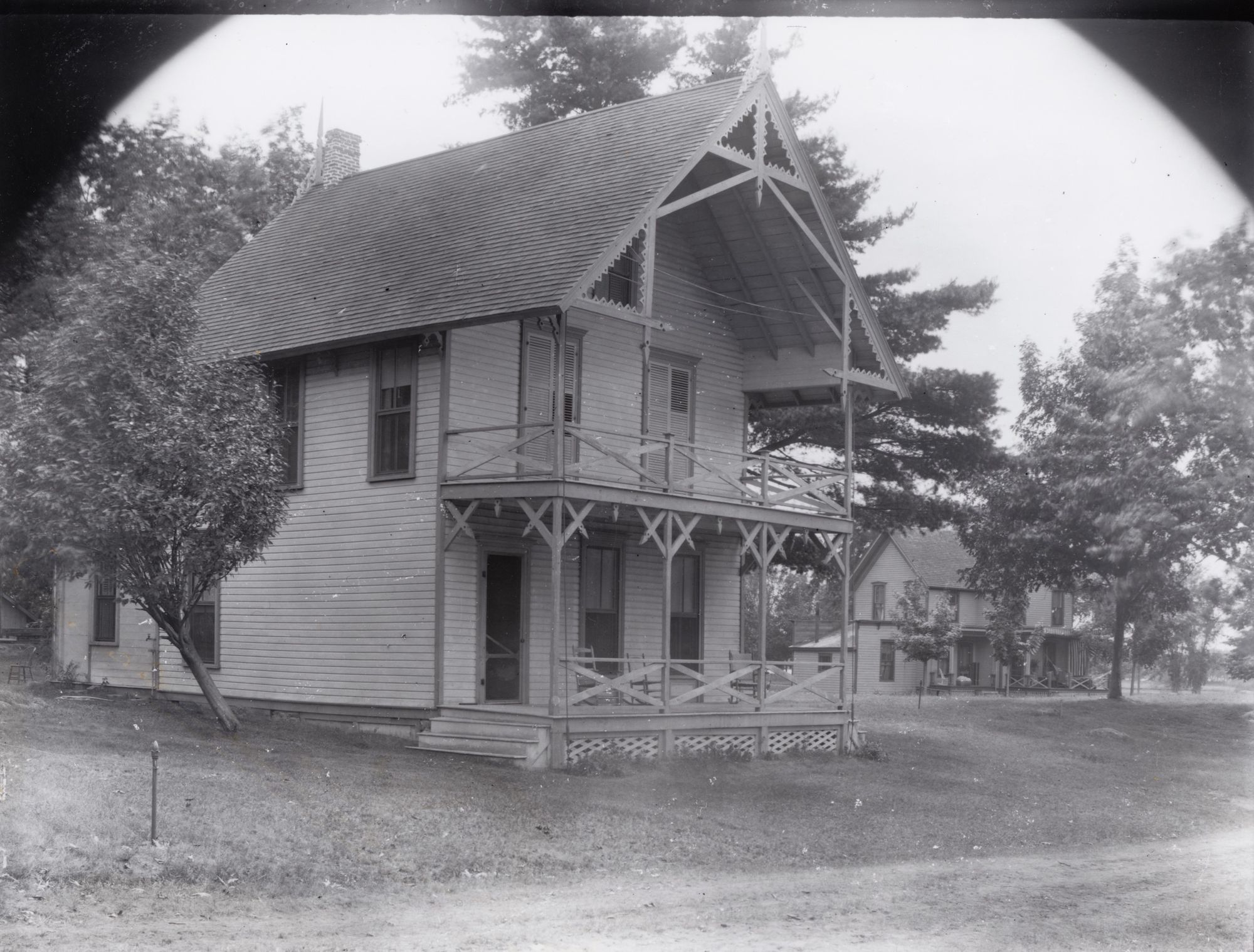
This image of the Huntington cottage was shared from the Michael Creem collection. It was a print made from a glass negative. I do not know the date, but it was believed to have been taken in the first ten years of the cottage’s existence. There are so many interesting details in this image. Notice the porches featured crossed members that were identical in style to the ones on the Westminster Park Hotel. The roofline gingerbread trim is identical to other Westminster cottages built in that era. The spires on the front and back of the cottage may have been added after initial construction as they are not evident in an earlier sketch of the house. There are two long turnbuckles on the front corners, used to stabilize the cottage. We also see that this house had some plumbing connections toward the rear of the house. Of particular note to Westminster History Lovers is the metal spike in the front yard with the pineapple top. I have been told that these were property markers used to denote boundary lines. Most have vanished over the years, but would be a historic relic if one were found under a cottage or in an attic.
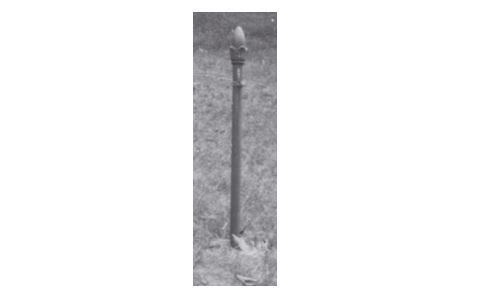
We can see from this image that the cottage, owned by the Schoen family, is not on its present-day site. The side yard of Huntington’s is open, allowing a view of the original farmhouse of Westminster Park in the background of the Huntington image.
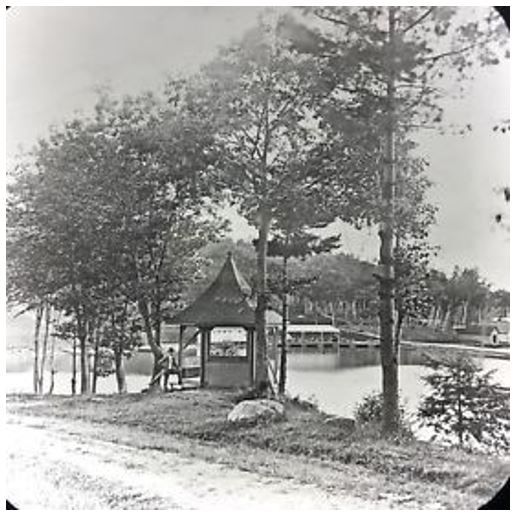
Collectors of Westminster memorabilia have a number of photos, stereo views, and magic lantern slides of a gazebo, which according to the calculations of local History Detectives may have been just in front and one lot to the side of the Huntington property. My guess is that it was erected by the Westminster Park Association who owned all the waterfront property at that time. This image gives a perspective of the view one might have had from the porch of the Huntington cottage. Of interest is that some images show the gazebo having support braces on the sides; other do not. I wonder who that dapper gentleman is.
Last month’s article on the George and Anna Hanford cottage noted the sale of “Lookout Cottage” to C. G. Tousey of Poughkeepsie in 1887. Within a few years, Tousey sold that house to C. G. Hall, a prominent New York City attorney. In the newspaper social columns, we read that the Hall family enjoyed entertaining friends from New York. In August of 1893, one of those guests was Louis Gimbrede of Brooklyn. Louis was the son of Anna Clotilde Gimbrede Browne. In August of 1894, the Huntington’s sold their Westminster Cottage to Clotilde for the sum of $1500. The Gimbrede’s remained in Westminster for generations. They owned a number of cottages and properties and had a significant impact on life in Westminster.
Footnotes:
[1. Some accounts refer to the Watertown Temperance Society; others refer to the Watertown Prohibition Club. Were these the same?]
©Linda Twichell 2019
Next month’s article will tell the story of the Twichell family.
Linda Lewis Twichell, a fifty-six-year resident of Westminster Park, has collected historical information on the Westminster community, since the 1970’s. Presently, her research focuses on the lives of the people who settled here in the last quarter of the 19th century, and the cottages they built. A book of Westminster Park, its people, and their stories is in the works. Be sure to check out Linda’s other historical research published in previous issues of TI Life.
Editor's note: The original article was corrected as the cottage adjacent to the Huntington Cottage is owned by the Schoen Family. Apologies for the misstatement.
Posted in: Volume 14, Issue 2, February 2019, History, People, Places
Please click here if you are unable to post your comment.
